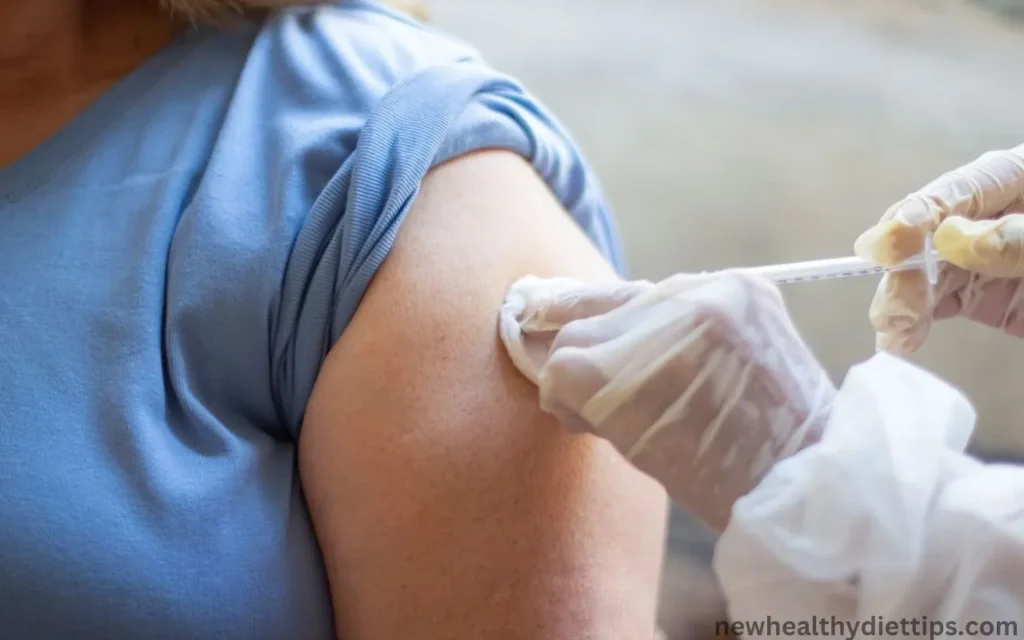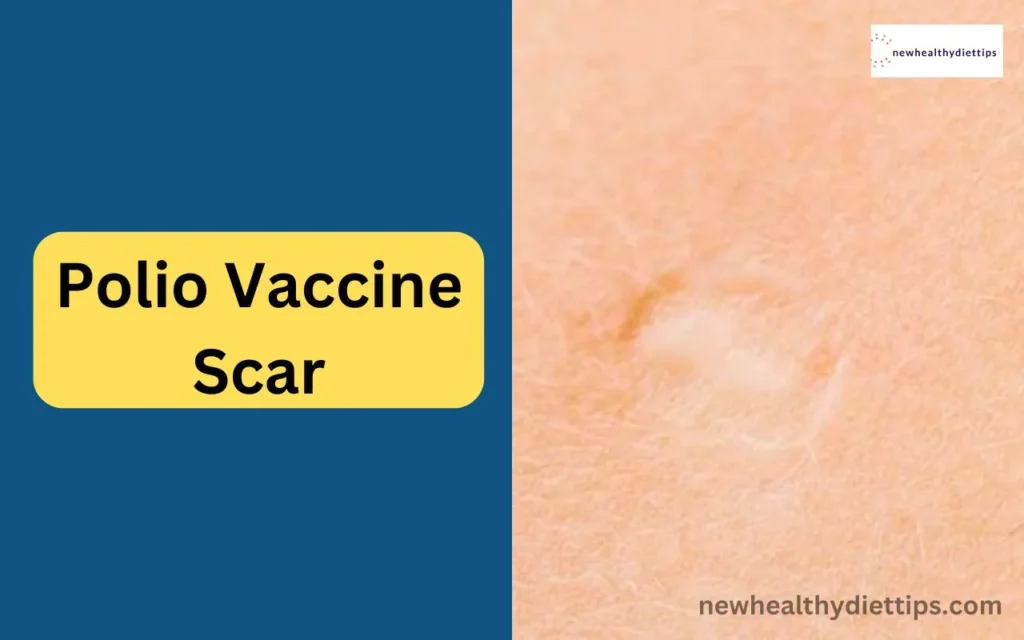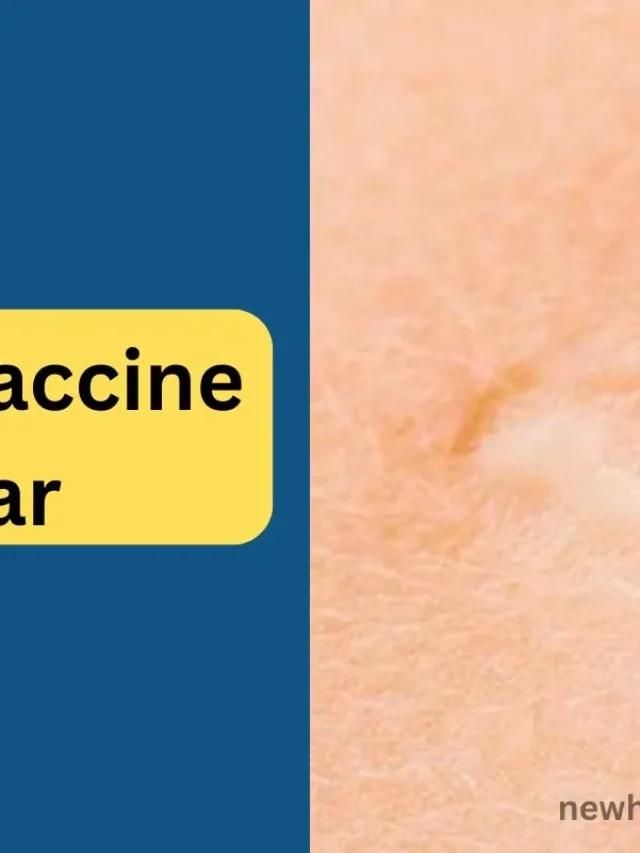That polio vaccine scar-like dimple on your upper arm may have caught your attention. Ever wondered where it came from? That indentation is a remnant of one of the most extensive public health campaigns. The 1950s polio pandemic left kids paralyzed and on iron lungs. The world needed a vaccination. Jonas Salk’s miracle injection followed. The government quickly mobilized to vaccinate every American child. The effort to eradicate a terrible disease and your childhood shot left its imprint. This ding symbolizes a hard-won victory over a frightening sickness. This is the story behind your arms.
What Is a Polio Vaccine Scar?
A little round scar on your upper arm may indicate birth before the mid-1990s. Polio vaccine scars are left over from childhood vaccinations. The Salk vaccination, named after its developer, Jonas Salk, was used from 1955 until 1963. This arm-injected vaccine included dead polio virus. Injection scars are apparent.
Sabin oral polio vaccine debuted in the early 1960s. Oral, sugar-cube-based polio vaccination contained attenuated live virus. It was scarless. Most countries switched to the Sabin oral polio vaccine because it was quicker to give and provided more immunity. However, some countries used Salk-injected polio vaccines into the 1990s.
A Success Mark
Many countries were polio-free thanks to the polio vaccine. The Salk or Sabin vaccine scar symbolizes this feat. It symbolizes your childhood immunity against an illness that caused extensive pain.
Though modest, the polio vaccine scar is significant. It recalls a time when polio killed thousands and disabled many. Global vaccination eliminated polio in most countries, leaving a few endemic. A vaccine scar is a sign of gratitude for medical advances that have improved life.
Remember medical history’s achievement when you see that dimple on your arm. Happy to live in a time when vaccines have eliminated polio.

How the Polio Vaccination Worked
Polio vaccine creator Jonas Salk created it in the 1950s. Three inactivated poliovirus strains make up the virus. When the vaccine was given, your immune system developed antibodies to combat those poliovirus strains.
Building Immunity
A booster shot would improve your immunity a month after the first shot. The vaccine gave your body enough polio virus to learn how to fight it without causing it. This ensured that if you were exposed to active poliovirus later, your immune system could quickly kill it without paralysis or other complications.
A Gamechanger
Polio vaccines were revolutionary. Before its invention, polio outbreaks shook communities and disabled children and adults. The vaccination ended polio and helped people live without fear of paralysis and death. Polio was eliminated in the U.S. in 1979 and is almost extinct worldwide due to extensive vaccination.
A Scar Remains
Though administered, the polio vaccine scar often left a minor scar—a dimple on your arm. This happened due to needle thickness and injection site placement. Newer vaccines are delivered with tiny needles in fleshy arm areas, whereas the polio vaccine was given with a larger needle in the upper arm deltoid muscle. The scar commemorates a world-changing medical breakthrough.
Polio vaccine development and distribution were public health accomplishments. It ended a global pandemic and saved countless lives, leaving just a scar and profound memories.
In this moment, you are whole, you are enough, and you are loved. 💫 Embrace the stillness within and let it guide you towards a deeper sense of peace and harmony. 🌸 pic.twitter.com/zIWJnfQzRM
— newhealthydiettips (@newhealthy96941) February 7, 2024
Why Did the Polio Vaccine Leave a Scar?
The childhood polio vaccine created a scar on your arm that may still be present. Why did the vaccine have to be given that way? Injections were needed for several reasons.
There Was No Oral Vaccine
No oral polio vaccine existed when it was launched in the 1950s. Only the inactivated poliovirus vaccine (IPV) with killed strains was available. An arm injection was required. The first oral polio vaccination was introduced in 1961.
The inactivated vaccine should be injected.
The early IPV polio vaccine contained dead poliovirus strains. Injections were needed, usually in the arm. Injections were needed to guarantee vaccination strains entered the bloodstream. However, an oral vaccine contains attenuated live poliovirus strains that can reach the digestive tract.
Injection-Site Scarring
The needle injection into the arm produced mild skin and tissue injury. Scar tissue grew after the injection, creating today’s little round scar. Your body’s normal healing process after the needle penetration caused the scar.
High vaccine demand requires efficient administration.
When the polio vaccine was introduced, demand was considerable due to nationwide epidemics. The most efficient technique to vaccinate many children quickly was by injection. Distributing oral vaccinations took longer and cost more. Quick assembly line immunization was possible with injections.
Your arm’s polio vaccine scar may be modest, but it signifies medical progress against a disease that crippled and killed thousands annually. That scar represents polio victory.
Caring for and Removing Polio Vaccine Scar
Care for scars
The small pockmark on your arm commemorates a medical breakthrough, but you don’t have to like it. Protect the scar from the sun to reduce its appearance. Too much UV exposure can discolor and highlight the scar. Use broad-spectrum sunscreen with at least 30 SPF outside, especially in the first year. Massage the area daily with a moisturizer for soft skin and better blood flow.
Medical procedures
If you still dislike the scar, surgical treatments can reduce its appearance. Injections of steroids can erase scars. Dermabrasion stimulates collagen and cell development by exfoliating the outer layer of the skin. Laser therapy breaks scar tissue and fades discoloration using precise light pulses. Although numerous treatments are needed, these procedures are often helpful, and results vary by skin type and scar severity.
Home remedies
Your vaccine scar may improve slightly with natural therapies. Over time, silicone gel or sheets can flatten and fade the scar. Lemon juice, rich in vitamin C, may brighten. Moisturise, soften, and relieve inflammation with aloe vera gel. These home treatments have a subtle impact on most people. Medical methods usually improve vaccination scars.
Conclusion
The polio vaccine scar on your arm may not be your favorite beauty mark, but consider it a badge of honor for eradicating a once-common and fatal disease and saving many lives. Your vaccine scar reminds us how lucky we are to live in such a medically advanced period also explore about Is There a Vaccine for Dengue Fever?.
Our Services include the best healthy eating habits, nutrition guides, diet, nutrition plans and newsdailytime.
FAQs
What caused the polio vaccine scar?
The body’s standard healing mechanism causes smallpox vaccine scars. The body repairs skin quickly after injury, like with the smallpox vaccine.
When did the polio vaccine end?
Since 2000, the US has only utilized inactivated polio vaccination. Safe and practical, this arm or leg shot prevents paralysis and severe disease.
Will the polio vaccine live forever?
Polio vaccines confer lifetime immunity. If past immunization proof is unavailable, no testing is suggested to validate prior vaccination, and no booster dosage is advised.
What are the 3 polio types?
Three types of poliovirus exist: wild poliovirus types 1, 2, and 3. Wild polio types 2 and 3 are extinct, and type 1 is found in a few countries. Paralysis is most familiar with type 1 polio.
Is the polio vaccine 100% safe?
Two doses of the inactivated vaccine prevent polio 90% of the time; a third dose protects 99% to 100%. The recommended schedule includes inactivated vaccination at 2, 4, and 6 months with a booster at 4–6 years. The vaccine is safe in terms of polio vaccine scar.


